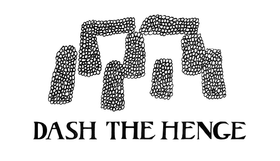
Various
Nippon Acid Folk 1970/1980
通常価格
£26.99
単価
あたり
A counterculture movement united by an expansive, experimental and deeply soulful sensibility, Japan’s rebel protest music challenged the status quo and changed the country’s music industry in the process.
(🇯🇵👇)
The birth of Japan’s nascent acid folk scene was rooted in the messy and invigorating political climate of the late 1960s. It is a story of Dadaists, communists, pharmacists and cult leaders, led by a young generation of upstart students, artists and dreamers hellbent on turning their world upside down.
Born on the campuses of Tokyo, Kyoto and Osaka, and centred around newly formed independent label and left-wing stronghold URC, this uniquely Japanese form of folk expression provided an outlet for musicians who were tired of aping Western sounds and instead found ways to sing in Japanese and integrate traditional forms in new ways.
At the forefront of this movement was Yellow Magic Orchestra’s Haroumi Hosono, a polymath innovator whose band Happy End released the first Japanese language rock album, and whose influence would go on to be felt across Japanese music for decades. Alongside, and informed by the Kansai scene’s Takashi Nishioka and Happy End collaborator Ken Narita, they experimented with cadences and accents of the Japanese language to open the door for others to experiment with their own forms of psychedelic folk too.
Some, like Nishioka, were more inspired by Dadaism than drugs, while others, like Kazuhisa Okubo, would ultimately find work as a chemist, having founded two further folk groups that flirted with varying levels of success. Obstinately uncommercial, relentlessly creative, the music featured on Time Capsule’s Nippon Acid Folk represents a broad church of influences.
Perhaps the wildest addition to this congregation however was Hiroki Tamaki, a classically-trained violinist and committed iconoclast, whose synth-prog odysseys hinted at his obsession with the divine. Subsumed by the teachings of Bhagwan Shree Rajneesh, he penned an album in praise of the infamous religious leader of which two superbly mind-bending tracks are featured on this compilation.
Charting the decade from 1970 to 1980 as the dreams of political and spiritual liberation seeded in the ‘60s turned to dust, Nippon Acid Folk surveys a little explored corner of Japanese music history, but one which ultimately laid the foundations for an independent music industry, launching the careers of Hosono and others in the process.
Nippon Acid Folk 1970-1980 is pressed on 12” vinyl and represents the start of Time Capsule’s deep dive into Japan’s rich history of folk and psychedelic soul music.
昭和のカウンター・カルチャー音楽の歴史を紐解くコンピレーション。はっぴいえんどや西岡たかしのURCカタログからレア自主制作盤まで幅広いアシッド・フォークを収録!
日本におけるカウンター・カルチャー音楽の誕生は混沌としながらも情熱にあふれた1960年代後半の学生運動の終焉から始まる事になる。反骨精神に溢れながら独自の表現を模索したこのムーヴメントはダダ主義者、共産主義者、薬剤師、そしてカルト・リーダーによって引率され、若い学生、アーティスト、夢追い人等が自らの世界を逆転させようと情熱を燃やしていた物語だった。
東京や京都、大阪のキャンパスで産まれた日本独自のフォーク音楽はその後、左翼思想の日本初独立レーベルであるURC(アンダーグラウンド・レコード・クラブ)を中心に栄えて行き、西洋音楽のコピーから脱却を目指していた当時の日本の音楽家達はここで新たな表現を開拓して行く事になった。
その最前線に常に居たのが日本が誇る音楽家である細野晴臣。その後に結成されたY.M.O.で世界でその名を知らしめる事になるが、国内での評価を決定づけたのは本作収録のはっぴいえんどの一員として初めて日本語をロックに載せる事に成功させた事だった。関西フォークの西岡たかし等がですます口調で日本語の節を調整させた事から始まり、その後の成田賢を含め彼等は日本語による表現にこだわり、その精神と影響は現代まで受け継がれる事になる。
また、後に風や猫と言ったフォークグループで活躍する事になる広島出身の大久保一久が東京の大学卒業時にににんがしというバンド名義で自主制作したレア盤からの楽曲を含め、本作 Nippin Acid Folk 1970-1980 には当時の人気や影響力を超越した現代の視点から考える多様なアシッド・フォークを8曲収録。
その中でも最も異質なアーティストとも言えるのがクラシック界出身のバイオリニスト、玉木宏樹。キース・エマーソンも真っ青なシンセ・プログ・アルバムを1975年に発表し、80年にはインド出身の有名な精神指導者で宗教家的リーダーのバグワン・シュリ・ラジニーシ(通称・オショー)を讃えるアシッド感満載のアコースティックなアルバムを日本コロムビアから発売。本作にはそのアルバムから2曲を収録。A面、B面共に冒頭を飾る。
インサートには収録曲のオリジナルアートワーク、はっぴいえんど初期の写真撮影を全て任されていた写真家、野上眞宏氏による70年代の日本の写真を収録し、英語と日本語による4ページ・ライナーでは60年代後半の社会的・音楽的背景を振り返りながら日本独自のカウンター・カルチャー音楽の誕生とその最初の10年の歴史を辿る。
「Nippon Acid Folk 1970-1980」はタイム・カプセルが日本の過去の様々なシーンを切り取って紹介する “Nippon Series” の一部です。今後発売されるシリーズ続編もご期待下さい。
(🇯🇵👇)
The birth of Japan’s nascent acid folk scene was rooted in the messy and invigorating political climate of the late 1960s. It is a story of Dadaists, communists, pharmacists and cult leaders, led by a young generation of upstart students, artists and dreamers hellbent on turning their world upside down.
Born on the campuses of Tokyo, Kyoto and Osaka, and centred around newly formed independent label and left-wing stronghold URC, this uniquely Japanese form of folk expression provided an outlet for musicians who were tired of aping Western sounds and instead found ways to sing in Japanese and integrate traditional forms in new ways.
At the forefront of this movement was Yellow Magic Orchestra’s Haroumi Hosono, a polymath innovator whose band Happy End released the first Japanese language rock album, and whose influence would go on to be felt across Japanese music for decades. Alongside, and informed by the Kansai scene’s Takashi Nishioka and Happy End collaborator Ken Narita, they experimented with cadences and accents of the Japanese language to open the door for others to experiment with their own forms of psychedelic folk too.
Some, like Nishioka, were more inspired by Dadaism than drugs, while others, like Kazuhisa Okubo, would ultimately find work as a chemist, having founded two further folk groups that flirted with varying levels of success. Obstinately uncommercial, relentlessly creative, the music featured on Time Capsule’s Nippon Acid Folk represents a broad church of influences.
Perhaps the wildest addition to this congregation however was Hiroki Tamaki, a classically-trained violinist and committed iconoclast, whose synth-prog odysseys hinted at his obsession with the divine. Subsumed by the teachings of Bhagwan Shree Rajneesh, he penned an album in praise of the infamous religious leader of which two superbly mind-bending tracks are featured on this compilation.
Charting the decade from 1970 to 1980 as the dreams of political and spiritual liberation seeded in the ‘60s turned to dust, Nippon Acid Folk surveys a little explored corner of Japanese music history, but one which ultimately laid the foundations for an independent music industry, launching the careers of Hosono and others in the process.
Nippon Acid Folk 1970-1980 is pressed on 12” vinyl and represents the start of Time Capsule’s deep dive into Japan’s rich history of folk and psychedelic soul music.
昭和のカウンター・カルチャー音楽の歴史を紐解くコンピレーション。はっぴいえんどや西岡たかしのURCカタログからレア自主制作盤まで幅広いアシッド・フォークを収録!
日本におけるカウンター・カルチャー音楽の誕生は混沌としながらも情熱にあふれた1960年代後半の学生運動の終焉から始まる事になる。反骨精神に溢れながら独自の表現を模索したこのムーヴメントはダダ主義者、共産主義者、薬剤師、そしてカルト・リーダーによって引率され、若い学生、アーティスト、夢追い人等が自らの世界を逆転させようと情熱を燃やしていた物語だった。
東京や京都、大阪のキャンパスで産まれた日本独自のフォーク音楽はその後、左翼思想の日本初独立レーベルであるURC(アンダーグラウンド・レコード・クラブ)を中心に栄えて行き、西洋音楽のコピーから脱却を目指していた当時の日本の音楽家達はここで新たな表現を開拓して行く事になった。
その最前線に常に居たのが日本が誇る音楽家である細野晴臣。その後に結成されたY.M.O.で世界でその名を知らしめる事になるが、国内での評価を決定づけたのは本作収録のはっぴいえんどの一員として初めて日本語をロックに載せる事に成功させた事だった。関西フォークの西岡たかし等がですます口調で日本語の節を調整させた事から始まり、その後の成田賢を含め彼等は日本語による表現にこだわり、その精神と影響は現代まで受け継がれる事になる。
また、後に風や猫と言ったフォークグループで活躍する事になる広島出身の大久保一久が東京の大学卒業時にににんがしというバンド名義で自主制作したレア盤からの楽曲を含め、本作 Nippin Acid Folk 1970-1980 には当時の人気や影響力を超越した現代の視点から考える多様なアシッド・フォークを8曲収録。
その中でも最も異質なアーティストとも言えるのがクラシック界出身のバイオリニスト、玉木宏樹。キース・エマーソンも真っ青なシンセ・プログ・アルバムを1975年に発表し、80年にはインド出身の有名な精神指導者で宗教家的リーダーのバグワン・シュリ・ラジニーシ(通称・オショー)を讃えるアシッド感満載のアコースティックなアルバムを日本コロムビアから発売。本作にはそのアルバムから2曲を収録。A面、B面共に冒頭を飾る。
インサートには収録曲のオリジナルアートワーク、はっぴいえんど初期の写真撮影を全て任されていた写真家、野上眞宏氏による70年代の日本の写真を収録し、英語と日本語による4ページ・ライナーでは60年代後半の社会的・音楽的背景を振り返りながら日本独自のカウンター・カルチャー音楽の誕生とその最初の10年の歴史を辿る。
「Nippon Acid Folk 1970-1980」はタイム・カプセルが日本の過去の様々なシーンを切り取って紹介する “Nippon Series” の一部です。今後発売されるシリーズ続編もご期待下さい。
あなたも好きかも
-
![友川カズキ - ついにファーストアルバムが完成]() 友川カズキ - ついにファーストアルバムが完成
友川カズキ - ついにファーストアルバムが完成£26.99
-
![パペ・ジンジエンギ・エ・ソン・グループ - カディ・ヨンボ]() 発売中パペ・ジンジエンギ・エ・ソン・グループ - カディ・ヨンボ
発売中パペ・ジンジエンギ・エ・ソン・グループ - カディ・ヨンボ£9.99から 通常価格
£31.99 -
![ザ・モーウェルズ - プレゼンティング・ザ・モーウェルズ]() ザ・モーウェルズ - プレゼンティング・ザ・モーウェルズ
ザ・モーウェルズ - プレゼンティング・ザ・モーウェルズ£14.99





